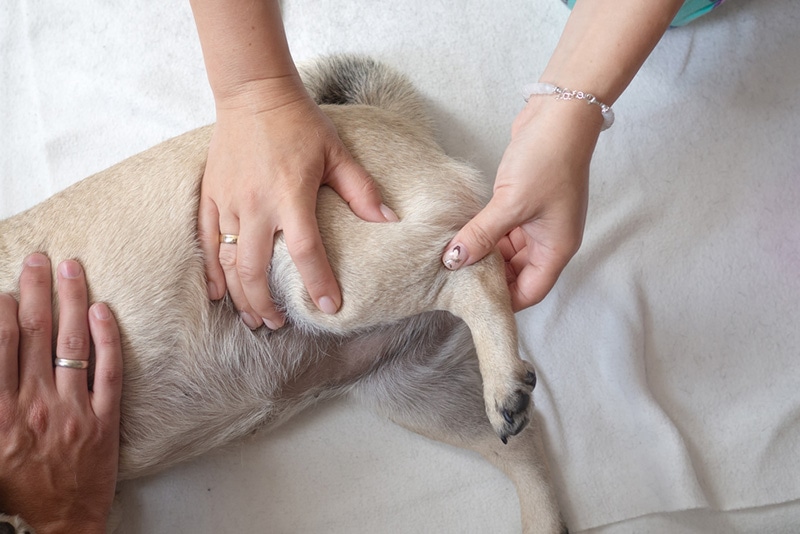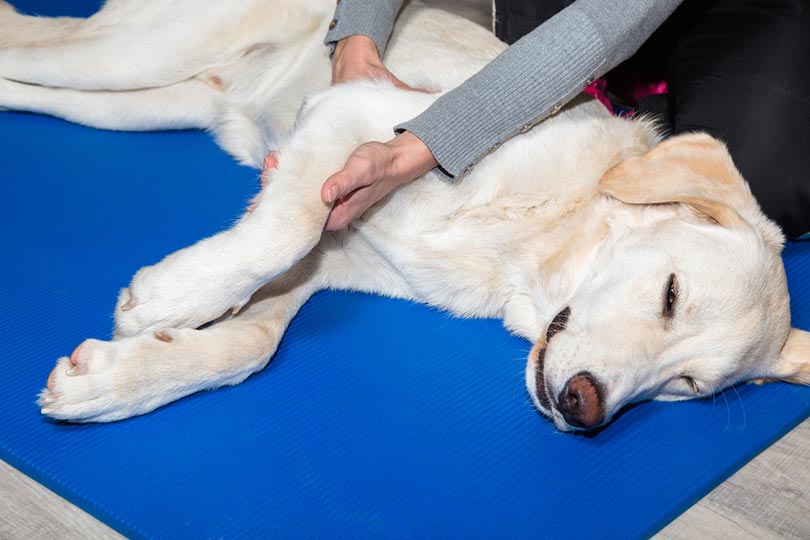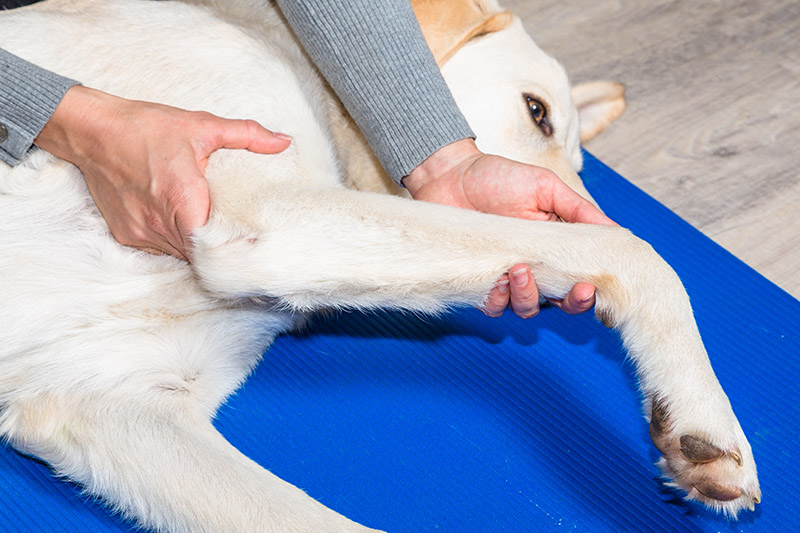Just like humans, dogs can experience pain and discomfort when their ligaments, muscles, cartilage, and tendons surrounding their knee joints are damaged. One common injury is a torn ACL, although in dogs it is actually the cranial cruciate ligament (CCL) that is affected. This condition can cause extreme pain for your furry companion. While medical treatment is essential, there are ways you can provide relief for your dog’s torn ligament from the comfort of your own home. Massaging the injured leg not only helps alleviate their pain, but also strengthens the bond between you and your four-legged friend.
Signs Your Dog May Have a Torn CCL
Certain factors such as breed, existing health conditions, and weight can make some dogs more prone to CCL rupture or tear. If you suspect that your dog has torn their CCL, watch out for these signs:
- Limping or lameness in one or both hind legs
- Difficulty or reluctance to bear weight on the affected leg
- Swelling around the knee joint
- A popping sound at the time of injury
If you observe any of these symptoms, it’s crucial to seek veterinary attention. A professional examination is necessary to confirm a damaged CCL as the cause of your dog’s pain. Severe cases often require surgery for proper healing and stability.
Before You Massage Your Dog
Your dog’s veterinarian may recommend a trained professional to assist with massage therapy during their recovery. This ensures that your dog receives the full benefits of massage under the guidance of an expert. While massaging your dog at home can be beneficial, it is important to note that massage is not a substitute for proper pain management and veterinary treatment. Avoid massaging your dog’s CCL if the injury is recent, they experience pain during movement, or they have recently undergone surgery. Always exercise extreme caution, as even the most gentle-natured dog in pain may bite. When in doubt, seek professional advice.
Benefits
Low-intensity massages can provide the following benefits for dogs with a torn CCL:
- Alleviates minor aches and pains
- Helps improve the range of motion in the affected knee joint
- Prepares the muscles for exercise
- Promotes relaxation and reduces stress
The 5 Steps to Massaging Your Dog with a Torn CCL
Here’s a step-by-step guide to massaging your dog’s injured leg:
1. Get your dog comfortable.
The first and most important step is to ensure your dog feels safe and relaxed during the massage. Create a calm environment free from disturbances that may cause anxiety. You want your dog to associate the massage with a positive experience.
2. Use pain-relieving gels or massage oils.
Using dog-safe massage oils or pain-relieving gels recommended by your veterinarian can enhance the effectiveness of the massage. Apply the oil or gel to the affected leg to lubricate the area and facilitate smooth, gliding movements. However, if your dog has fur over the affected area, skip this step.
3. Focus on the entire body, not just the affected area.
Begin by massaging the base of your dog’s ear flaps, using slow circular motions with your thumbs. Gradually move your hands down to their neck, back, and flank, applying gentle yet firm pressure. This full-body massage helps your dog relax and prepares them for the more targeted massage on the affected leg.
4. Include their legs and hips in the massage.
While standing behind your dog, continue massaging along their flank. Place your thumbs on their back and your palms along their flank, curving your palms downwards over their pelvis and outer thighs. Repeat this motion several times, carefully observing your dog’s response to the touch.
5. Massage the surrounding thigh muscles using a “C” motion.
Avoid massaging the knee itself and instead focus on the thigh muscles surrounding it. These muscles may become stiff or sore due to the injury. Gently press both thumbs into the glute muscle and move them in a slow, clockwise “C” motion. Repeat this motion along the thigh, between the hip and knee joints. If your dog responds well, apply the same technique to the affected leg, starting from the glute and working towards the inner and outer thigh.
Frequently Asked Questions
Q: Can I massage my dog if they have recently undergone surgery for a torn CCL?
A: It is best to consult with your dog’s veterinarian before attempting any massage therapy post-surgery. They will advise you on the appropriate time to start massaging your dog’s leg.
Q: Can massaging my dog with a torn CCL replace veterinary treatment?
A: No, massaging your dog is a complementary therapy and should not replace proper veterinary treatment. Always consult with your dog’s veterinarian for the best course of action.
Q: What if my dog shows signs of discomfort during the massage?
A: Respect your dog’s signals and stop the massage if they appear uncomfortable or in pain. Massaging should be a positive experience for your dog.
Conclusion
Massaging your dog with a torn CCL can be a valuable way to bond with your furry friend and alleviate some discomfort and stiffness after their injury heals. Remember to maintain slow, moderately firm pressure throughout the massage to ensure your dog’s safety. As always, consult with your dog’s veterinarian for proper pain management and treatment. By providing comfort and care through massage, you can support your dog’s recovery and well-being.
Featured Image Credit: Yekatseryna Netuk, Shutterstock
To learn more about how to provide care for your beloved furry friends, visit Pawsoha.



